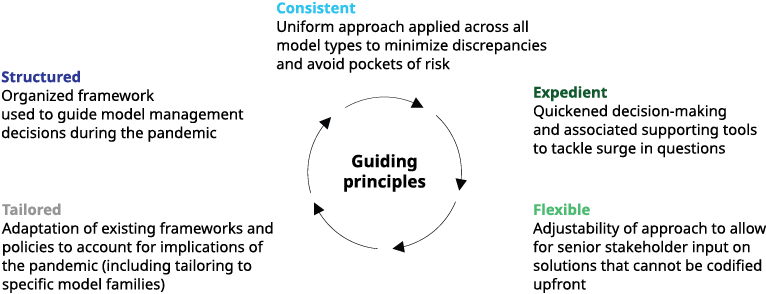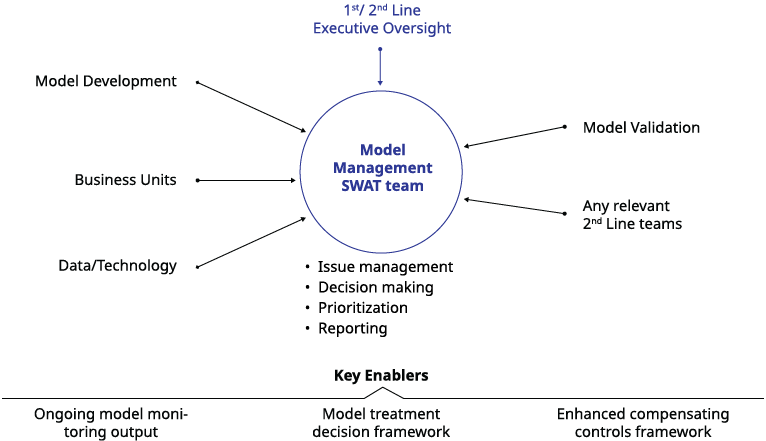This article was first published on May 26, 2020.
As economies around the world gradually come to terms with the COVID-19 pandemic and consider reopening plans, businesses will continue to grapple with the uncertainty and lagging impacts of the pandemic for the foreseeable future.
The pandemic has introduced new and unprecedented challenges for financial institutions across the model life cycle — in development, validation, and monitoring. And COVID-19 will continue to drive a major surge in necessary model management efforts over the coming months to address the expected performance deterioration of existing models.
Our new paper, Model Management In The COVID-19 Era, provides the critical actions to take now and helps financial institutions develop a more resilient model management program to guide 2020 (and beyond) activities.
Financial institutions need to understand the impact of the pandemic on model management and start acting now
Senior stakeholders will need to tackle a host of difficult questions to guide these efforts, leveraging existing frameworks where possible, while considering alternate solutions that might have previously seemed unacceptable or nuanced approaches that might have previously seemed suboptimal. Financial institutions will need to appropriately preempt the significant surge of model management efforts during and coming out of the pandemic by implementing six immediate actions.
CHALLENGES OF MODEL MANAGEMENT
The COVID-19 pandemic has put large parts of the global economy on “pause” and greatly disrupted the way other parts operate on a day-to-day basis. While financial institutions have grown more resilient through the accumulated experience of previous crises such as the global financial crisis, there are many aspects of the COVID-19 challenge that are unique in nature.
The rapid onset and magnitude of COVID-19 presents a range of challenges across the entire model management life cycle. Model developers and validators across the first and second lines of defense will need to confront these difficult issues while working against time pressure and resource constraints. We see challenges across each stage in the model life cycle including model performance/model monitoring, model (re-)development, and model (re-)validation.
GUIDING PRINCIPLES FOR MODEL MANAGEMENT

SIX IMMEDIATE ACTIONS TO TAKE NOW
There are six immediate actions for financial institutions to take to address the challenge and guide upcoming model management activities. Please see the "Model Management In The COVID-19 Era" PDF version for a comprehensive breakdown of each of these actions.
MODEL MANAGEMENT SWAT TEAM

PATH FORWARD
The extraordinary and rapidly evolving nature of the COVID-19 pandemic poses a host of new and unprecedented challenges for model management practices across the financial services industry. Most notably, the pandemic will cause a significant surge in model management activity over the coming months. While the need for increased effort and resources will likely be more acute starting towards the end of 2020, the time for financial institutions to prepare is now.
A critical step for senior executives is to take tangible actions upfront to ensure that institutions are focusing on the right set of problems and effectively managing the increased workload. The six actions outlined in our paper will help financial institutions better deal with the situation and develop a model management plan — including timelines and resources, that guides the remainder of 2020 (and beyond) activities. Financial institutions able to implement these six actions will be in a position to best monitor and address model management issues as we navigate through the pandemic. These actions will help financial institutions reduce the operational burden by focusing on the most material model management questions, and emerge with a stronger and more resilient model management program.








